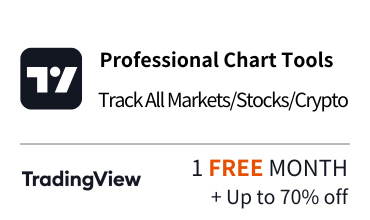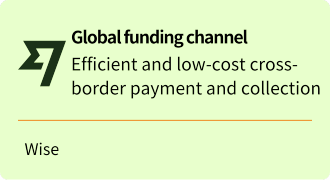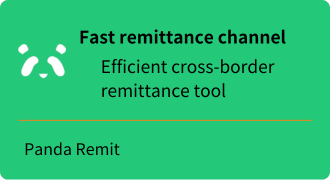Canada's Financial Regulatory System: An Essential Safety Guide for New Immigrant Investors
[DISCLAIMER] This article is for educational and informational purposes only and does not constitute investment advice. Readers should consult with qualified financial professionals before making any investment decisions.
As a financial content creator, I frequently receive questions from new immigrants and beginner investors: "Is Canada's investment environment safe? Who is protecting my funds?" Especially for investors who have migrated from China or other countries to Canada, understanding the local financial regulatory system is crucial. Today, I will provide you with a detailed explanation of Canada's financial regulatory system to give you greater peace of mind on your investment journey.
I. Why Understanding Canadian Financial Regulation Is So Important: A Pre-Investment Essential
Remember the 2008 financial crisis? Many investors suffered heavy losses because they didn't understand regulatory protection mechanisms. In Canada, even during that global crisis, not a single major financial institution collapsed—thanks to its robust regulatory system.
Understanding Canada's financial regulatory system is like taking out insurance for your investments. It helps you:
- Identify legitimate investment channels and avoid investment scams
- Understand what remedies are available when investments go wrong
- Master the specific limits and scope of investor protection
Whether you're a new immigrant just arriving in Canada or a local resident looking to expand your investment horizons, this guide will help you navigate the Canadian financial markets with confidence.
II. Canada's Multi-layered Regulatory Architecture: Who's Guarding Your Money?
Canada employs a decentralized regulatory model, which differs significantly from China's centralized regulation. Imagine a castle with multiple security systems, where different guards are responsible for securing specific areas.
2.1 Federal Level: The Foundational Regulatory Framework
At the highest level, there are several key federal regulatory agencies:
- Bank of Canada - As the central bank, it is responsible for setting monetary policy and maintaining financial system stability, but does not directly regulate individual investments. This is like the command tower of the castle, responsible for overall strategy.
- Office of the Superintendent of Financial Institutions (OSFI) - Primarily regulates federally registered financial institutions, including banks and insurance companies. If you open an account at one of Canada's Big Five banks (RBC, TD, Scotiabank, BMO, CIBC), OSFI is the institution ensuring these banks operate soundly.
- Canada Deposit Insurance Corporation (CDIC) - Protects depositors' deposits at member institutions, with coverage up to CAD 100,000 per account. This is like a safety deposit box for your bank savings; even if the bank has problems, your money has basic protection.
2.2 Provincial Regulation: The Key Role of Provincial Securities Commissions
This is a unique aspect of Canadian financial regulation—securities regulation is primarily the responsibility of the provinces, not the federal government.
Each province and territory has its own securities commission, the main ones including:
- Ontario Securities Commission (OSC) - Manages Canada's largest financial market, with the Toronto Stock Exchange under its regulatory purview. For investors in the Toronto area, the OSC is your primary regulatory umbrella.
- British Columbia Securities Commission (BCSC) - Regulates markets and investment companies in the Vancouver area. If you reside in BC, BCSC regulations directly affect your investment activities.
- Autorité des marchés financiers (AMF) - Regulates Quebec's financial markets, including securities, insurance, and financial planning.
- Alberta Securities Commission (ASC) - Regulates securities markets and transactions within Alberta.
The main responsibilities of provincial securities commissions include:
- Issuing licenses to brokerage firms and investment advisors
- Reviewing information disclosure by listed companies
- Investigating and punishing securities fraud
- Establishing securities regulations applicable to their province
I often encounter many investors who are confused by this decentralized regulatory model. Indeed, it is quite different from China's nationally unified regulatory model under the CSRC. But don't worry—to coordinate regulatory work across provinces, Canada established the Canadian Securities Administrators (CSA), an informal coordinating organization composed of 13 provincial regulatory agencies, aimed at harmonizing securities regulations across provinces and ensuring regulatory consistency.
2.3 Self-Regulatory Organizations: Industry Gatekeepers
In addition to government regulation, Canada has several important self-regulatory organizations (SROs):
- Investment Industry Regulatory Organization of Canada (IIROC) - This is one of Canada's most important self-regulatory bodies, responsible for regulating investment dealers and trading markets. If you invest through traditional brokers (such as RBC Direct Investing, TD Direct Investing, etc.), IIROC is the agency regulating these brokers.
- Mutual Fund Dealers Association (MFDA) - Specifically regulates mutual fund dealers. If you purchase mutual funds, this organization indirectly protects your interests.
Since 2023, IIROC and MFDA have merged into the new Canadian Investment Regulatory Organization (CIRO) to streamline the regulatory structure.
III. IIROC's Core Functions: The Investor's Safety Guardian
As Canada's most important self-regulatory organization, IIROC (now part of CIRO) plays a key role in protecting investors. Its function is like a strict referee, ensuring all participants follow the rules of the game.
3.1 IIROC's Main Responsibilities
- Establishing and Enforcing Rules - IIROC has established a series of rules governing how member institutions conduct business and interact with clients. This covers everything from capital adequacy ratios to client account management.
- Monitoring Trading Activities - IIROC monitors all trading activities in Canadian stock markets in real-time, ensuring trades are fair and transparent. This is like a 24-hour monitoring room, watching every suspicious transaction.
- Registering and Reviewing Investment Advisors - In Canada, all registered investment advisors must be approved by IIROC. I recommend that investors verify an advisor's registration status on the IIROC website before choosing an investment advisor.
- Handling Investor Complaints - When you have a dispute with a broker or investment advisor, IIROC provides a complaint handling mechanism. I once helped a client successfully resolve a commission dispute with a broker through IIROC; the process was somewhat cumbersome but ultimately resulted in fair treatment.
3.2 How IIROC Protects Your Investment Safety
IIROC's regulation is not just on paper; it protects investors through specific measures:
- Regular Inspection of Member Institutions - IIROC conducts comprehensive inspections of member institutions every 1-2 years to ensure their operations comply with regulations. This is like regular safety checks, ensuring your investment platform is safe and reliable.
- Rule Enforcement - When violations are discovered, IIROC has the authority to investigate and punish, including fines, suspension, or revocation of membership. In 2022, IIROC imposed fines totaling more than CAD 5 million on non-compliant brokers and individuals.
- Investor Education - IIROC provides abundant investor education resources to help investors understand risks and rights. I strongly recommend that new investors browse IIROC's official website to learn how to protect their investments.
- Capital Adequacy Requirements - IIROC requires all member institutions to maintain certain capital adequacy ratios, ensuring they have sufficient funds to fulfill obligations to clients. This is the first line of defense against investor losses in case of broker failure.
IV. Canadian Investor Protection Mechanisms: Your Last Line of Defense
Even with strict regulation, financial institutions may still face problems. In these cases, investor protection funds become your last line of defense.
4.1 Canadian Investor Protection Fund (CIPF)
What is CIPF? CIPF is a non-profit organization that provides protection for investors when IIROC-regulated member institutions go bankrupt. This is like extra insurance for your investments.
Protection Coverage:
- Up to CAD 1 million for each general account
- An additional CAD 1 million for each registered retirement account (RRSP)
- An additional CAD 1 million for each registered retirement income fund (RRIF)
- An additional CAD 1 million for each tax-free savings account (TFSA)
Real-world case: In 2011, when MF Global Canada went bankrupt, CIPF ensured that all eligible clients recovered their securities and cash.
It's important to note that CIPF protects against asset losses in case of broker bankruptcy, not losses due to market fluctuations, investment mistakes, or fraud.
4.2 Other Investor Protection Mechanisms
- Canada Deposit Insurance Corporation (CDIC) - Mentioned earlier, it protects deposits at member banks, up to CAD 100,000 per account.
- Assuris - If you purchase Canadian life insurance products, Assuris provides protection, ensuring policyholders receive a certain degree of protection if the insurance company goes bankrupt.
- Provincial Insurance Guarantee Funds - Provinces also have insurance guarantee funds, providing similar protection for non-life insurance.
- Financial Consumer Agency of Canada (FCAC) - This is a federal agency responsible for ensuring financial institutions comply with consumer protection regulations and handling consumer complaints.
V. Investor Self-Protection: Vigilance Is the Best Defense
Although Canada's regulatory protection is quite comprehensive, the best protection always comes from the investor's own vigilance. Here is my advice to all friends investing in Canada:
- Verify Registration Status - Before dealing with any investment professional or company, verify their registration status through the CSA's National Registration Search tool. I once saw a new immigrant who nearly fell victim to an unregistered "investment advisor," fortunately, he conducted verification at the last moment.
- Understand Investment Protection Limits - Clearly understand the limits of various protection mechanisms and reasonably diversify assets. For example, if your cash deposits exceed CAD 100,000, consider spreading them across multiple CDIC member banks.
- Retain All Transaction Records - Properly maintain all investment transaction confirmations, monthly statements, and communication records, which are crucial in case of disputes.
- Familiarize Yourself with Complaint Procedures - Understand which institution to complain to in different situations. For example, complaints against brokers should first be made to the broker itself, then to IIROC, and finally possibly to the Ombudsman for Banking Services and Investments (OBSI).
- Be Wary of High Return Promises - Any investment product promising abnormally high returns with "zero risk" should be viewed with suspicion. Remember, in Canada, legitimate investment advisors will not guarantee investment returns.
VI. Canada Vs. China: Key Differences in Financial Regulation
I've noticed several key differences between the two countries' regulatory systems:
- Decentralized vs. Centralized - Canada adopts a decentralized regulatory model with independent securities regulatory agencies in each province; China adopts centralized regulation, with the China Securities Regulatory Commission uniformly managing the national securities market.
- Role of Self-Regulatory Organizations - Canada's self-regulatory organizations (such as IIROC) have greater power and directly participate in daily regulation; China's industry associations play more of an auxiliary role.
- Investor Protection - Canada has explicit investor compensation mechanisms, such as CIPF; China has also been strengthening investor protection in recent years, but differences remain in the mechanisms.
- Information Transparency - Canada requires listed companies and financial institutions to disclose more detailed information and places more emphasis on investor education.
These differences do not mean that one system is better than the other; they simply reflect different regulatory philosophies and market characteristics. As a cross-border investor, understanding these differences helps better adjust investment strategies.
VII. Latest Regulatory Developments: More Protection for Investors in the Future
Canada's financial regulatory system continues to evolve. Here are several noteworthy recent developments:
- IIROC and MFDA Merger - As mentioned earlier, the two major self-regulatory organizations have merged into the Canadian Investment Regulatory Organization (CIRO), simplifying the regulatory structure and potentially improving efficiency.
- Client Relationship Model 2 (CRM2) - This regulatory requirement makes investment fees and advisor compensation more transparent. Now, brokers must clearly disclose all fees you pay, including hidden commissions.
- Enhanced Suitability Standards - Regulators have strengthened "Know Your Client" (KYC) and "Know Your Product" (KYP) requirements, ensuring that advisors recommend products that truly meet client needs.
- Strengthened Digital Asset Regulation - With the rise of digital assets like cryptocurrencies, various Canadian regulatory agencies are developing relevant regulations to enhance investor protection in this area.
VIII. Conclusion: Canada's Regulatory Umbrella, Your Investment Safety Net
Canada's multi-layered financial regulatory system provides investors with a fairly comprehensive protection network. From federal regulatory agencies to provincial securities commissions, from industry self-regulatory organizations to various guarantee funds, it forms an all-around protection system.
As a friend investing in Canada, you should:
- Fully understand the responsibilities and protection scope of various regulatory agencies
- Use tools provided by regulatory agencies to verify the legitimacy of investment advisors and products
- Be familiar with complaint and compensation procedures to protect your rights when needed
- Stay vigilant, remembering that the best protection always comes from your own prudence
Investment carries risk, but with an understanding of Canada's regulatory system, you can minimize these risks and invest more confidently in the Canadian market.
Do you have other questions about Canadian financial regulation? As a new immigrant investor, which aspect of protection concerns you the most? Feel free to share your thoughts and questions in the comments section!
In my next article, I will provide a detailed interpretation of the "Canadian Stock Investment Terminology Dictionary" to help you better understand the professional terminology of the Canadian market and clear language barriers for your investment journey. Stay tuned!







